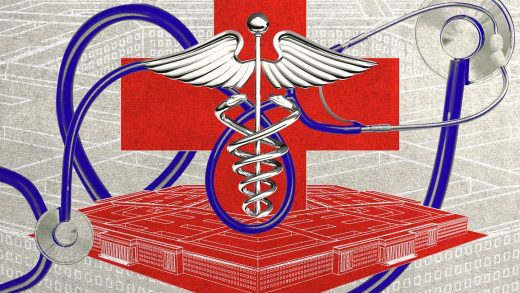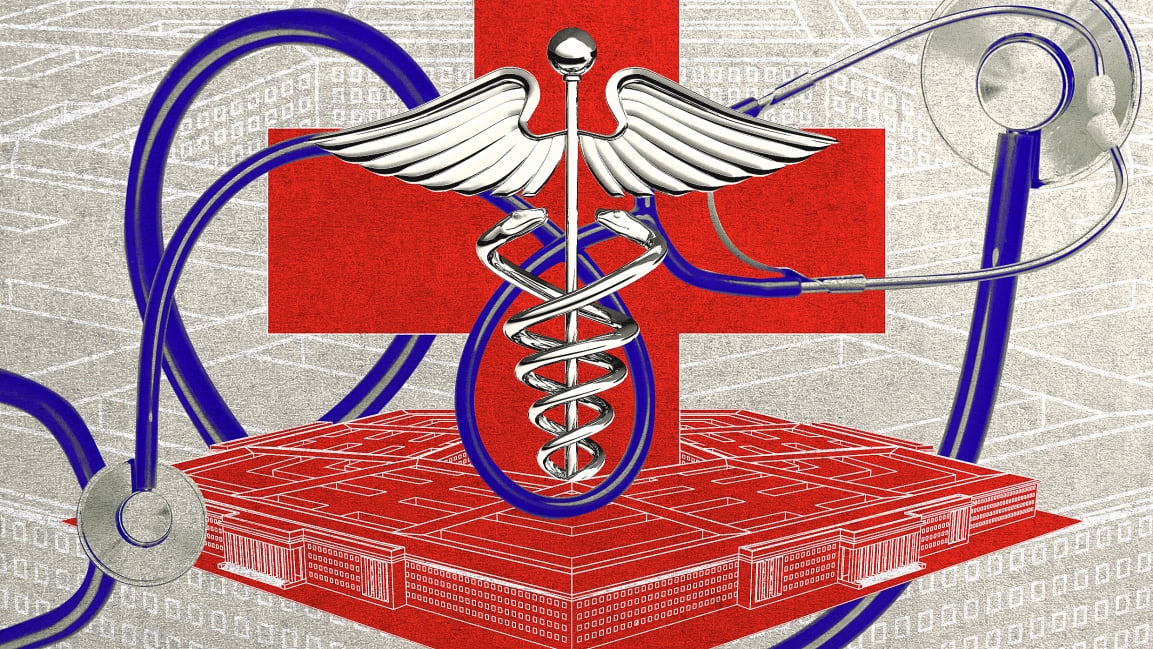Meet HARPA, the bold way Biden can jump-start health innovation
As part of his first-100-days effort, President Biden’s administration is working to form a new agency that could change the face of healthcare: an Advanced Research Projects Agency for Health. This new agency would pay academics and private companies to develop innovative health products and services, mimicking the process of the Defense Advanced Research Projects Agency (DARPA), whose work helped create the internet. The goal would be to create a government engine that could help advance innovation into real-world products for healthcare that could solve persistent problems: high drug costs, lack of treatments for rare diseases, poor systems of care, and of course, pandemic preparedness.
Biden has proposed spending a bold $300 billion on research and development over the next four years. It’s part of his plan to grow jobs in the U.S. Among the sectors he highlighted for investment were health, medicine, and biotechnology. It’s in this section of his vision that he proposes the development of an advanced research group for health.
Now the administration is working to garner support for the idea. In order to create HARPA, President Biden will need an act of Congress. The administration is currently seeking support from this measure. If it’s successful, what could it do?
What is HARPA?
HARPA would join an existing roster of what is known as “research project agencies.” There is DARPA, which operates under the Defense Department, and there is BARDA, the Biomedical Advanced Research and Development Authority (part of the Department of Health and Human Services). There is also ARPA-E, an agency created in 2007 to explore commercial innovation in the energy sector, which has led to incredible advances in new fuel types and battery technology. All these agencies contract with the private sector and academic institutions to work on cutting-edge research projects over a three- to five-year period. They all have multibillion-dollar budgets. On the campaign trail last year, Biden suggested that ARPA-H should have a $50 billion budget and live within the Department of Health and Human Services.
DARPA, created in 1958 on the heels of the Soviet Union’s Sputnik satellite launch, has seeded some of the greatest inventions of the modern era, including the internet predecessor ARPANET, GPS, drones, and brain implants that monitor your memories. BARDA, meanwhile, funds emergency preparedness programs and responses to emerging biological threats. Its work has resulted in anthrax antitoxins and vaccines, among other things. The agency most recently financed Moderna’s COVID-19 vaccine development.
HARPA—or ARPA-H, as President Biden calls it in his vision document—would do the same thing, but for common health issues. (While BARDA is focused on health, it’s devoted to pressing biological threats, such as COVID-19.) HARPA would focus on new products that solve medical problems that private companies currently have no incentive to invest in.
“Innovations in biomedical research are right now largely funded by the private sector or through organizations like the [National Institutes of Health],” says Mike Stebbins, a geneticist and former assistant director for biotechnology at the White House Office of Science and Technology Policy, who has been campaigning for the formation of HARPA for years. “The problem is you’ve only got a $40 billion budget for the NIH annually, and they fund very little in the way of research on products.”
Why do we need it?
There are a lot of health products Americans need that simply don’t exist. There are roughly 7,000 rare diseases that affect roughly 30 million Americans, but only 800 treatments for those diseases. It isn’t for lack of research. Rather, it’s because companies say it costs too much money for them to want to invest in making therapeutics that will only treat a small portion of the population.
This phenomenon, known as the “valley of death,” is a product of the way research is funded. “We fund applied research through the private sector on the one side and basic research [in academia] on the other side and in between the two is the valley,” says Stebbins. “That valley needs to be filled so there’s a warm handoff from basic science research that we fund all the way through to products.”
The government has tried to stoke innovation in healthcare through a few different mechanisms. The Orphan Drug Act of 1983 provides grants that are supposed to defray costs associated with developing drugs for rare diseases. The Bayh-Dole Act, passed in 1980, allows for government-funded science to be patented. There is also the National Center for Advancing Translational Sciences, which works with universities to fund innovative science that can be applied to the real world. But Stebbins says these projects are not making it out of the lab. In order to bring any of these projects to scale, he says, private companies need to be involved.
Liz Feld, president of the Suzanne Wright Foundation, which is devoted to pancreatic cancer research, agrees. “We have done a spectacular job at basic research and a very unsatisfactory job at leveraging that research to save lives,” she says.
She also says that part of the problem is that no one is measuring the results of these programs. “We need to measure effectiveness by how many lives are we saving,” says Feld. “This isn’t to say that there aren’t some pieces of the overall system that are working well, but combined they aren’t delivering results. Results are everything from detection tests, to therapeutics, curative treatments, for the vast number of human disease.”
The National Cancer Institute estimates that 57,600 people were diagnosed with pancreatic cancer in 2020. Roughly 90% of them will die. There are no screening tests or early detection blood tests for the disease. It doesn’t affect enough people for the private sector to invest in, and Feld says Congress doesn’t like to invest in projects that only benefit one disease. She believes that an agency such as HARPA could catalyze development of an array of medical products that may help raise the survival rate for people with pancreatic cancer. Some of the basic research behind these innovations, she says, already exists. An advanced research projects agency for health would bridge the gap between the existing literature and a finalized market-ready product as it has done for other sectors.
This is true for other diseases as well. There is a lack of research not just for therapeutics and diagnostics, but for whole systems of care as well. Take substance-use disorders, which cost the United States $740 billion annually in healthcare, lost productivity, and crime. It also kills an extraordinary number of people. Excessive drinking is linked to 95,000 deaths annually, while drug overdoses have killed as many as 70,000 in recent years. There are effective treatment protocols for alcohol and opioid use disorder that have been tested in randomized controlled trials. However, these methods, which incorporate behavioral health and primary care, are rarely used in actual healthcare settings.
“All this information is sitting within peer reviewed medical journals, and hardly any of it is being used in our community and our healthcare system,” says Gary Mendell, founder and CEO of Shatterproof, an organization that is trying to reverse the addiction crisis. The nonprofit has designed a system for evaluating addiction rehab programs based on whether or not they use these evidence-based practices. It has rolled out its evaluation in six states: Delaware, Louisiana, Massachusetts, New York, North Carolina, and West Virginia.
“HARPA could help us expedite getting that across the country faster,” he says, by connecting nonprofits and researchers with private companies that can help figure out how to make these ideas more efficient so they can be scaled.
What will it take to make it real?
Regardless of whether Health and Human Services or the president issues a directive calling for the creation of ARPA-H, ultimately Congress will have to sign off to create a new agency and authorize its corresponding budget. There’s good reason to think they will: It’s a rare issue with somewhat partisan support. Before leaving office last year, President Trump voiced support for such an initiative as a way to advance better systems for mental health.
For now, Stebbins is amassing a roster of advocacy groups, universities, and private sector companies around the country who would support the creation of the agency. He is planning to send a letter to Congress outlining the need for a HARPA in the coming weeks.
There’s reason to start funding this research as soon as possible: It could also prepare us for the next pandemic. Andrew Feinberg, professor of epigenetics at Johns Hopkins University Schools of Medicine, Engineering and Public Health, wrote earlier this year that a HARPA could accelerate the development of vaccines for coronaviruses that are already endemic but that don’t get the attention of the pharmaceutical industry because they aren’t deadly. The next pandemic could be deadlier, he wrote—”let’s not wait for it to arrive before we act.”
(75)



